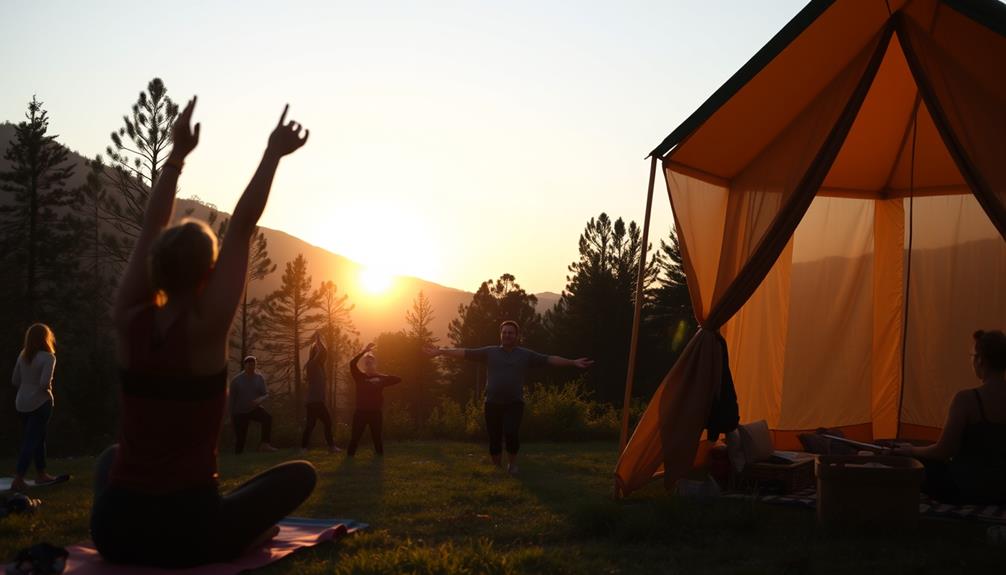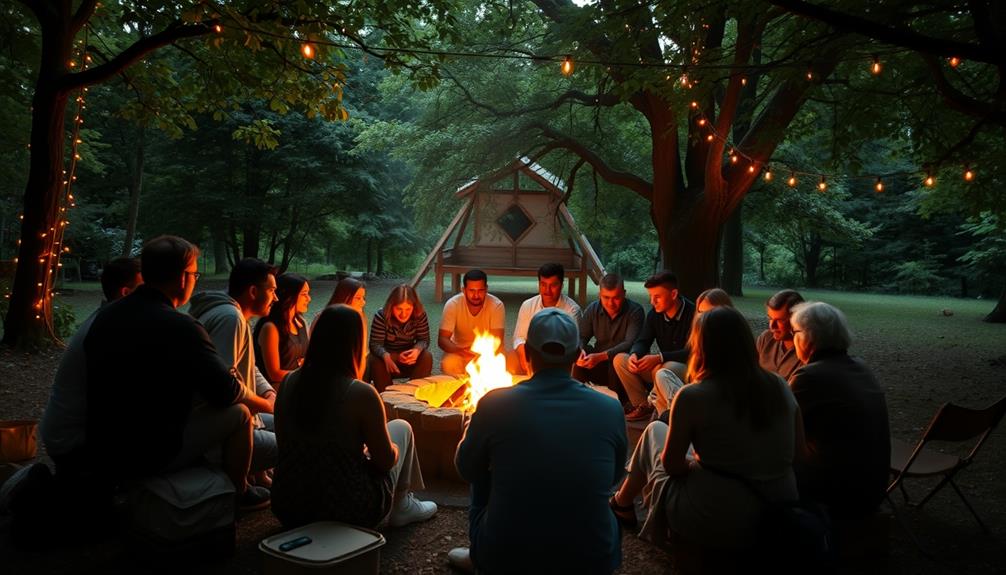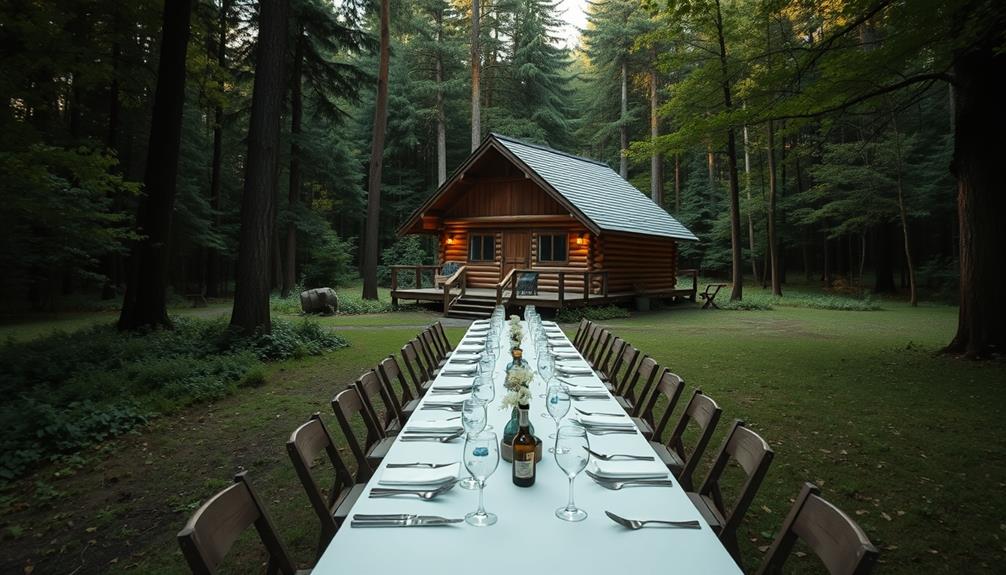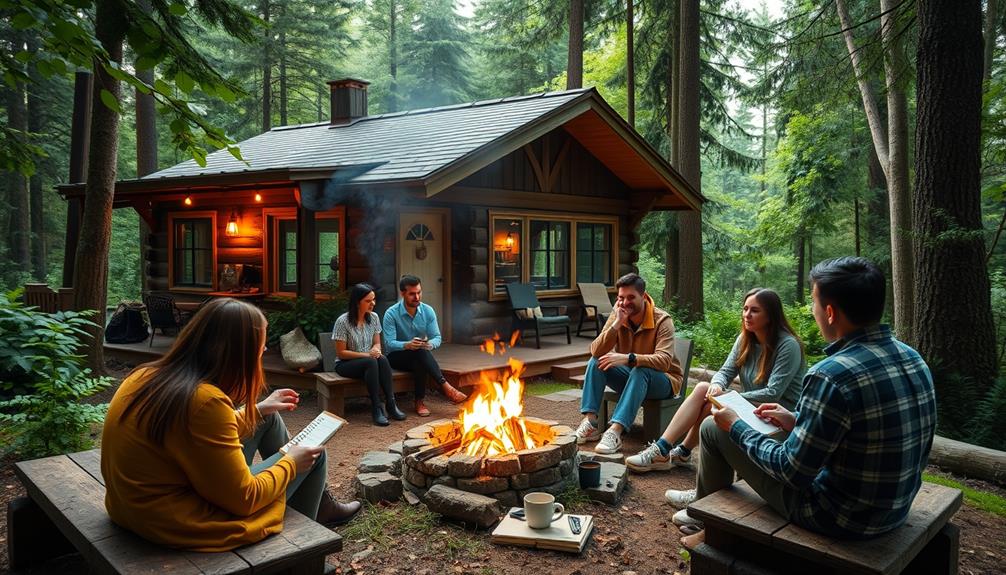In order to excel in retreat planning, you should begin by clearly defining your purpose and goals. Understand the needs and desired outcomes of your participants to help guide your event. Create a well-balanced schedule with a variety of activities while making sure to include breaks to maintain energy levels. Select engaging activities that appeal to everyone and help build a sense of community. Foster collaboration through team-building exercises and discussions. Gather feedback to assess the impact of the retreat and strive to improve future experiences. By focusing on these key elements, you can create a memorable and effective retreat. Keep exploring to discover more insights that can enhance your planning abilities. Remember to prioritize creating a comfortable and conducive environment for the retreat. This involves choosing an appropriate location and ensuring the facilities are well-maintained, such as using durable roofing materials to provide protection from various weather conditions. Additionally, emphasize clear communication and efficient logistics to ensure all participants have a seamless and enjoyable experience. By considering these factors, your retreat planning efforts will be thorough and successful. Additionally, be sure to address any special considerations or requests from participants, as this can greatly enhance their experience. For those looking to unwind during leisure time, you might even share some fun activities, like topless sunbathing tips for cruises, to encourage relaxation and enjoyment in the sun. Ultimately, a successful retreat is one that fosters connection, rejuvenation, and personal growth among all attendees, leaving them with lasting memories and insights.
Key Takeaways
- Clearly define the retreat's purpose and goals to align activities and enhance participant experiences.
- Organize a balanced schedule that includes engaging sessions, breaks, and flexibility for unexpected changes.
- Select diverse activities that resonate with participants and promote personal growth and team collaboration.
- Foster community by incorporating team-building exercises and creating an inclusive and supportive environment.
- Gather and analyze participant feedback to continuously improve future retreat experiences and effectiveness.
Defining Purpose and Goals

Defining the purpose and setting clear goals are essential steps in planning a successful retreat. You need to identify the specific needs of your participants, which will guide your understanding of the retreat's purpose.
Consider what outcomes you want to achieve, whether it's personal growth or enhanced team collaboration. Establish measurable targets that allow you to track progress and evaluate success throughout the retreat.
This clarity helps create a focused and intentional experience for attendees. Align all activities with your defined purpose to enhance effectiveness, ensuring everyone remains motivated and engaged.
Organizing the Schedule

When organizing the schedule for your retreat, effective time management is essential for ensuring smooth operations. Start by setting realistic timeframes for each activity, making sure to include breaks for relaxation and socializing.
Balancing engaging sessions with rest periods helps maintain energy levels and focus. Evaluate your attendees' needs to allocate time effectively, ensuring everyone feels included and engaged.
Consider optimizing the schedule to maximize productivity while minimizing stress. It's vital to remain flexible, as unexpected changes might arise.
Communicate the schedule clearly to participants, allowing them to plan their participation. Finally, regularly review the flow of the schedule during the retreat to make any necessary adjustments, ensuring everyone's needs are met and the experience is enjoyable.
Selecting Activities

Selecting activities for your retreat is essential to creating an engaging and memorable experience. Start by brainstorming diverse options that resonate with your participants. Incorporate workshops, team-building exercises, and opportunities for personal growth. Guarantee activities align with your retreat's goals and foster an inclusive environment.
Here's a quick table to help you evaluate potential activities:
| Activity Type | Purpose |
|---|---|
| Workshops | Skill development |
| Team-building exercises | Strengthening community bonds |
| Reflection sessions | Personal growth and self-awareness |
| Group discussions | Encouraging open dialogue and sharing |
| Collaborative projects | Promoting teamwork and collaboration |
Fostering Community

Creating a strong sense of community during your retreat enhances the overall experience and fosters deeper connections among participants. To achieve this, choose activities that resonate with everyone's interests and encourage collaboration.
Incorporate team-building exercises that promote trust and support, allowing participants to open up and share their experiences. Design workshops that emphasize skill development and encourage group discussions, creating a safe space for everyone to express their thoughts.
Active listening and empathy-promoting activities can deepen these connections further. Finally, guarantee your retreat environment is inclusive and supportive, so everyone feels welcome.
Evaluating Impact

To truly understand the effectiveness of your retreat, evaluating its impact is essential. Start by gathering participant feedback through surveys, interviews, and discussions. This information will reveal strengths and areas needing improvement.
Look for testimonials that highlight personal growth and breakthroughs, as these insights can be powerful indicators of success. Document lasting impacts on participants' lives, capturing their expressions of gratitude.
By analyzing this feedback, you can identify trends and adjust future retreats accordingly. Continuous improvement is key; use evaluation results to refine your approach and enhance future experiences.
Practical Considerations

When planning your retreat, considering practical elements can make a significant difference in its success. First, choose a location that's accessible, has the necessary amenities, and creates the right atmosphere.
Communicate your retreat's purpose and goals clearly to guarantee everyone's on the same page. Engage participants by incorporating interactive activities that encourage participation and foster connection.
Balance structured activities with free time to allow for relaxation and reflection, which is vital for personal growth.
Finally, outline clear objectives to guide your planning and measure success effectively.
Continuous Improvement

Continuous improvement is essential for enhancing the effectiveness of your retreat. By gathering feedback from participants, you can identify strengths and areas for enhancement. This ongoing evaluation helps guarantee each retreat builds upon the last, creating a more impactful experience.
Here's a quick overview of the continuous improvement process:
| Step | Action |
|---|---|
| Collect Feedback | Use surveys and discussions |
| Analyze Results | Identify strengths and weaknesses |
| Implement Changes | Adjust based on feedback |
| Evaluate Again | Measure impact of improvements |
Frequently Asked Questions
What Is the Ideal Duration for a Retreat?
The ideal duration for a retreat typically ranges from two to five days. This timeframe allows you to balance structured activities with relaxation, ensuring participants engage fully while also having time to recharge and reflect.
How Do I Handle Dietary Restrictions for Participants?
You might worry handling dietary restrictions is complicated, but it's manageable. Start by surveying participants' needs, then collaborate with catering to guarantee everyone's accommodated. This fosters inclusivity and enhances the overall experience for all attendees.
What Are Effective Icebreakers for New Groups?
To foster connections in new groups, try fun icebreakers like "Two Truths and a Lie" or "Speed Networking." These activities encourage sharing, laughter, and engagement, helping everyone feel comfortable and included right from the start.
How Can I Ensure Inclusivity During Activities?
To guarantee inclusivity during activities, you'll want to take into account participants' diverse backgrounds and preferences. Encourage open dialogue, adapt tasks to various skill levels, and foster a supportive environment where everyone feels valued and heard.
What Should I Do if a Participant Feels Uncomfortable?
If a participant feels uncomfortable, you should address their concerns promptly and privately. Encourage open communication, adjust activities if necessary, and guarantee they feel safe and supported throughout the experience. Their comfort is essential.
Conclusion
As you immerse yourself in retreat planning, remember that even if you're worried about time constraints, a well-defined purpose and structured schedule can create an environment of growth and connection. You've got the tools to craft a transformative experience that resonates with participants. Embrace the opportunity to foster community and evaluate your impact, ensuring each retreat becomes better than the last. With your strategic approach, you're not just planning a retreat; you're creating lasting memories and meaningful connections.









